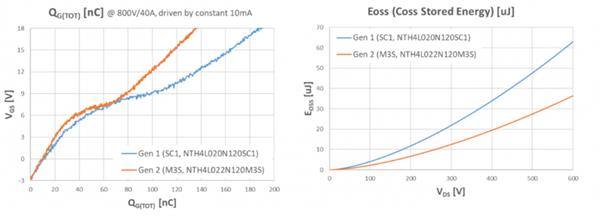Onsemi M3S EliteSiC MOSFET allows car charger to upgrade to 800V battery architecture

Ever since EVs took hold in the automotive market, EV makers have been chasing higher-power drivetrains, larger battery capacities and shorter charging times. To meet customer demand and extend driving range, electric vehicle manufacturers continue to increase the battery capacity of their vehicles. However, a larger battery means longer charging times.
To address both charging time and performance issues, many EV platforms are migrating from current 400V battery packs to 800V battery packs. When the vehicle is in drive mode, the higher available voltage can be used to increase motor power output or improve system efficiency while maintaining the same power level.
SiC-based components have proven to be advantageous over IGBT components for higher switching frequency applications. SiC technology also offers design advantages for the development of 800V batteries. It can reduce the size of the OBC system and improve the overall efficiency from generation to drive.
Following the successful launch of the first-generation 1200V EliteSiC M1 MOSFET, ON Semiconductor recently released the second-generation 1200V EliteSiC M3 MOSFET, focusing on optimizing switching performance. M3S products include 13/22/30/40/70mΩ in discrete packages for TO247-4L and D2PAK−7L. NVH4L022N120M3S is a MOSFET that meets the requirements of automotive regulations. The on-resistance RDS(ON) at 1200V is at least 22mΩ.
The ON Semiconductor team has extensively tested the key feature advantages of the M3S over the M1. M3S (NTH4L022N120M3S) requires less total gate charge QG (TOT) than M1 (NTH4L020N120SC1), which greatly reduces the sink and source current of the gate driver (as shown in Figure 1). In the case of the default VGS(OP)=+18V, the charge of M3S is 135nC, compared with the previous M1, the FOM (quality factor) in RDS(ON)*QG(TOT) is reduced by 44%, indicating that in Only 56% of the switch gate charge is required for the same on-resistance RDS(ON) devices.
Increasing the switching frequency helps designers reduce the size of energy storage components such as inductors, transformers, and capacitors, thereby reducing system volume. The more compact size and higher power density enable smaller package sizes for OBC systems, giving engineers more opportunities to distribute more weight elsewhere in the vehicle. In addition, operating at a higher voltage also reduces the current required throughout the vehicle, reducing the cost of cables between the power system, battery and OBC.
Lansheng Technology Limited, which is a spot stock distributor of many well-known brands, we have price advantage of the first-hand spot channel, and have technical supports.
Our main brands: STMicroelectronics, Toshiba, Microchip, Vishay, Marvell, ON Semiconductor, AOS, DIODES, Murata, Samsung, Hyundai/Hynix, Xilinx, Micron, Infinone, Texas Instruments, ADI, Maxim Integrated, NXP, etc
To learn more about our products, services, and capabilities, please visit our website at http://www.lanshengic.com



